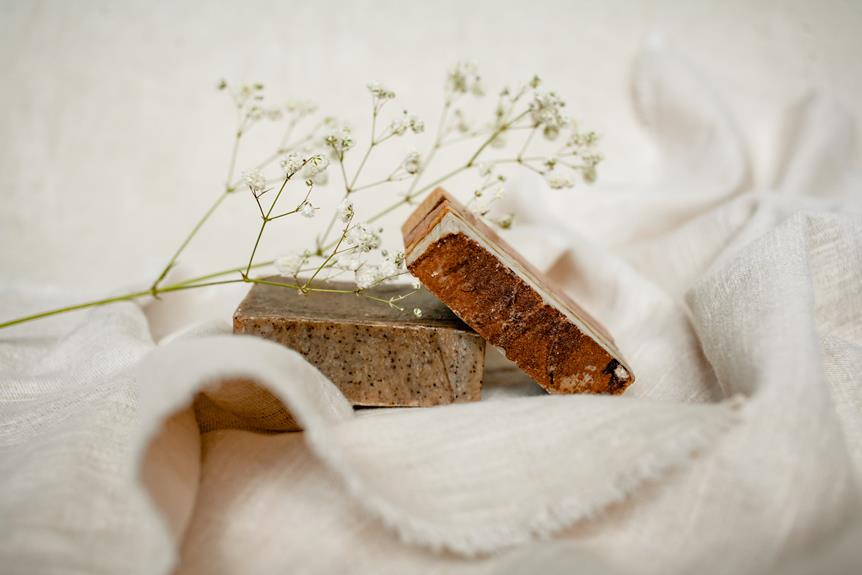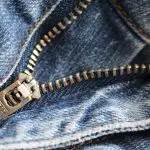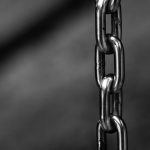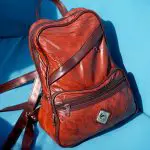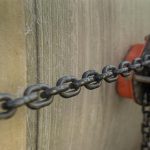Are high-quality locks the key to long-lasting fabric products?
Understanding the significance of superior locks in preserving the longevity of fabric items is crucial for those seeking mastery in product durability. Quality locks play a pivotal role in securing fabric components, preventing premature wear and tear.
Exploring the impact of low-quality locks on fabric lifespan and the benefits of investing in superior locks will provide valuable insights. Additionally, considering key factors when selecting locks and implementing maintenance tips can further enhance the durability of fabric products.
Through examining case studies that highlight the correlation between lock quality and fabric longevity, you can gain a comprehensive understanding of the importance of high-quality locks in ensuring the prolonged lifespan of fabric items.
Key Takeaways
- High-quality locks ensure durability and longevity of fabric products.
- Low-quality locks compromise fabric longevity.
- Properly secured closures enhance fabric item integrity.
- Investing in high-quality fastenings safeguards fabric products from damage.
Importance of High-Quality Locks
When selecting fabric products, it's crucial to prioritize high-quality locks to ensure durability and longevity. Lock security plays a vital role in ensuring the reliability of fabric fastenings. High-quality locks provide the necessary strength and support to keep fabric products intact, even under stress and strain. The material strength of fabric fastenings is directly linked to the quality of the locks used. Inferior locks can compromise the overall integrity of the fabric, leading to potential damage and reduced product reliability.
Investing in fabric products with high-quality locks is an essential consideration for anyone seeking long-lasting, durable items. These locks are designed to withstand frequent use and maintain their effectiveness over time. By prioritizing lock security, you can have confidence in the longevity and performance of fabric products. Whether it's clothing, bags, or outdoor gear, the presence of high-quality locks significantly contributes to the overall reliability of these items.
Types of Locks for Fabric Products
To ensure the durability and reliability of fabric products, you need to be familiar with the various types of locks used for fabric fastenings.
There are several types of fastenings commonly used in fabric products, each serving a specific purpose in enhancing fabric security and longevity.
Hook and loop fasteners, commonly known as Velcro, offer a convenient and adjustable way to secure fabrics. These fasteners consist of two components: a lineal fabric strip with tiny hooks that can attach to a corresponding fabric strip with small loops, creating a strong bond.
Buttons and snaps are traditional fasteners that provide a secure closure, commonly used in garments and accessories. They come in various sizes, styles, and materials to suit different fabric types and design preferences.
Zippers are another popular type of lock for fabric products, providing a reliable and efficient way to open and close seams. They're often used in clothing, bags, and other textile goods.
Familiarizing yourself with these types of fastenings will empower you to make informed decisions when selecting and maintaining fabric products, ensuring their long-lasting quality and security.
Impact of Low-Quality Locks on Fabric Lifespan
Low-quality locks can significantly impact the lifespan of fabric products. They can lead to premature wear and tear, reducing the overall durability of the fabric.
It's crucial to understand the effects of secure fastenings on fabric longevity.
Lock Quality and Durability
By using low-quality locks, you may inadvertently shorten the lifespan of your fabric products. The durability and security of fabric fastenings are directly impacted by the quality of the locks used.
Consider the following:
- Decreased tensile strength: Low-quality locks can compromise the tensile strength of fabric fastenings, leading to frequent breakage.
- Increased wear and tear: Inferior locks are more prone to wear and tear, causing the fabric to deteriorate at a faster rate.
- Susceptibility to corrosion: Low-quality locks are often more susceptible to corrosion, which can weaken fabric fastenings over time.
- Compromised security: Inferior locks may compromise the security of fabric products, leading to potential damage or loss.
- Limited lifespan: The use of low-quality locks can significantly reduce the overall lifespan of fabric products, necessitating frequent replacements.
Effects on Fabric Longevity
When using low-quality locks, you risk compromising the longevity of your fabric products due to decreased tensile strength, increased wear and tear, susceptibility to corrosion, compromised security, and a limited lifespan. Proper lock maintenance and fabric care techniques are essential to mitigate these detrimental effects. By investing in high-quality locks and implementing regular maintenance, you can significantly extend the lifespan of your fabric products. Here's a comparison of the impact of low-quality locks versus high-quality locks on fabric longevity:
| Impact | Low-Quality Locks | High-Quality Locks |
|---|---|---|
| Tensile Strength | Decreased | Maintained |
| Wear and Tear | Increased | Reduced |
| Corrosion Susceptibility | High | Low |
| Security | Compromised | Enhanced |
Importance of Secure Fastenings
To ensure the longevity of your fabric products, it's crucial to prioritize secure fastenings. Low-quality locks can significantly diminish their lifespan.
Secure fastenings are essential for fabric security and material protection. Long lasting closures play a critical role in maintaining the integrity of your fabric items.
Low-quality locks can lead to premature wear and tear, reducing the overall lifespan of the product. Investing in high-quality fastenings is a proactive measure to safeguard your fabric products from potential damage.
Properly secured closures also contribute to the overall aesthetic appeal of the item. By choosing secure fastenings, you can enhance the durability and functionality of your fabric products, ensuring they withstand the test of time.
Benefits of Investing in Quality Locks
Investing in high-quality locks ensures the durability and security of your fabric products. The security provided by quality locks not only safeguards your fabric items but also contributes to their longevity. By investing in locks that offer top-notch security, you're making a valuable investment in the durability of your fabric products. High-quality locks provide added protection against theft or unauthorized access, ensuring that your fabric items remain intact and secure. This not only saves you from potential losses but also gives you peace of mind knowing that your valuable fabric products are well-protected.
Moreover, the durability of your fabric products is greatly enhanced when you opt for high-quality locks. These locks are designed to withstand the test of time, ensuring that they continue to provide the necessary security for your fabric items over an extended period. As a result, your fabric products are better equipped to maintain their quality and functionality, ultimately leading to a longer lifespan for your investment.
Therefore, the benefits of investing in quality locks extend beyond just security, positively impacting the overall longevity and durability of your fabric products.
Factors to Consider When Choosing Locks
When selecting locks for your fabric products, it's crucial to consider various factors that directly impact their security and longevity.
- Durability: Look for locks made from durable materials such as stainless steel or brass to ensure they can withstand frequent use without deteriorating.
- Cost: Consider the upfront cost of the locks as well as any potential long-term savings from investing in higher-quality, more durable locks.
- Material compatibility: Ensure that the locks you choose are compatible with the fabric and material of your products to prevent any damage or wear over time.
- Security features: Evaluate the security features of the locks, such as pick resistance and drill resistance, to ensure that they provide the level of protection needed for your fabric products.
- Ease of use: Consider the usability of the locks, especially if they'll be used frequently. Look for locks that are easy to operate and maintain to ensure convenience and longevity.
Carefully considering these factors will help you choose the most suitable locks for your fabric products, providing both security and long-lasting durability.
Maintenance Tips for Locks and Fabric Products
Taking care of your locks and fabric products is crucial for maintaining their quality and longevity. By choosing the right lock type and implementing fabric protection measures, you can ensure the durability of your fabric products.
Regular maintenance and proper care will help extend the lifespan of your locks and fabric items, ultimately saving you time and money in the long run.
Lock Type Impact
You should regularly inspect and lubricate the lock mechanism to ensure smooth operation and longevity of your fabric products. This maintenance routine is crucial for preserving both lock security and fabric integrity. Here are some essential maintenance tips to keep your locks and fabric products in optimal condition:
- Clean the lock mechanism regularly to remove dirt and debris that can cause wear.
- Use a silicone-based lubricant to grease the lock components and prevent corrosion.
- Check for any loose or worn parts and promptly replace or repair them to maintain optimal functionality.
- Avoid using excessive force when operating the locks to prevent unnecessary strain on the fabric.
- Store fabric products in a secure, dry area to minimize exposure to environmental elements that can degrade both the lock material and fabric wear.
Fabric Protection Measures
To ensure the longevity of your fabric products and locks, it's important to implement regular maintenance measures for both components.
For fabric protection, start by regularly cleaning and inspecting your fabric products for any signs of wear or tear. Use appropriate cleaning methods and products recommended by the manufacturer to maintain the fabric's quality and appearance.
Additionally, consider applying fabric protectants or waterproofing treatments to enhance the durability and resistance of the fabric against stains, moisture, and UV rays.
When it comes to security measures for locks, regularly lubricate the lock mechanisms to prevent rust and ensure smooth operation. Check and tighten any loose screws or components to maintain the lock's effectiveness.
Longevity and Durability
Regularly maintaining your locks and fabric products is crucial for ensuring their longevity and durability. Follow these maintenance tips to preserve the textile strength and extend the lifespan of your fabric products:
- Clean locks and fabric products regularly to remove dirt and debris that can weaken the fibers.
- Inspect locks for any signs of wear and tear, and promptly repair or replace any damaged components.
- Use appropriate lubrication for locks to prevent rust and ensure smooth operation.
- Store fabric products in a clean, dry area to prevent mold, mildew, and other forms of deterioration.
- Avoid overloading fabric products beyond their weight limits to prevent strain on the locks and fabric materials.
Case Studies: Lock Quality and Fabric Longevity
Examining the impact of lock quality on fabric longevity reveals compelling case studies that illustrate the direct correlation between the two. Several real-world examples highlight the significant role that high-quality locks play in ensuring the durability and longevity of fabric products. Below are case studies that demonstrate the influence of lock performance on fabric security:
| Case Study | Lock Quality | Fabric Longevity |
|---|---|---|
| Case 1 | High | Extended |
| Case 2 | Moderate | Average |
| Case 3 | Low | Limited |
| Case 4 | High | Extended |
These case studies emphasize the critical relationship between lock quality and the lifespan of fabric products. High-quality locks consistently result in extended fabric longevity, while lower quality locks lead to more limited lifespans. By investing in superior lock mechanisms, manufacturers and consumers can positively impact the security and durability of fabric products, ultimately ensuring their long-lasting performance.
Frequently Asked Questions
Can Low-Quality Locks Be Upgraded to High-Quality Locks on Fabric Products?
Yes, you can upgrade low-quality locks to high-quality locks on fabric products, enhancing fabric durability. Ensure lock compatibility and consider product customization for optimal results. Upgrading locks can extend the lifespan of fabric items.
Are There Any Environmental Benefits to Using High-Quality Locks on Fabric Products?
Choosing high-quality locks for fabric products has a significant environmental impact. The durability and sustainability of these locks reduce the need for frequent replacements, leading to less waste and lower resource consumption in the long run.
What Are the Potential Safety Implications of Using Low-Quality Locks on Fabric Products?
Using low-quality locks on fabric products can lead to potential safety hazards and reduced durability. While they may offer cost savings, there are trade-offs in effectiveness. It's important to weigh the implications for safety and longevity.
How Do Different Types of Locks Affect the Overall Aesthetic of Fabric Products?
Different types of locks can affect the overall aesthetic of fabric products. High-quality locks provide better color coordination and design flexibility, enhancing the visual appeal. Low-quality locks may limit design options and compromise the product's appearance.
Are There Any Specific Industry Standards or Certifications to Look for When Choosing High-Quality Locks for Fabric Products?
When choosing high-quality locks for fabric products, you should look for industry standards and certification requirements. Consider lock compatibility and proper installation techniques to ensure long-lasting durability and security for your fabric products.
- How Do You Identify Organza? - April 23, 2024
- Is Organza Always Silk? - April 23, 2024
- Why Is Organza so Expensive? - April 23, 2024

